The History of Beat 'em Up Games
Beat 'em ups, also known as street brawlers, are one of the most nostalgic genres in video games. With simple but addictive mechanics and co-op gameplay that brought friends and family together, these games left a mark on the gaming industry. Let's understand the entire history of this genre, from its humble beginnings in arcades to the evolution on consoles.
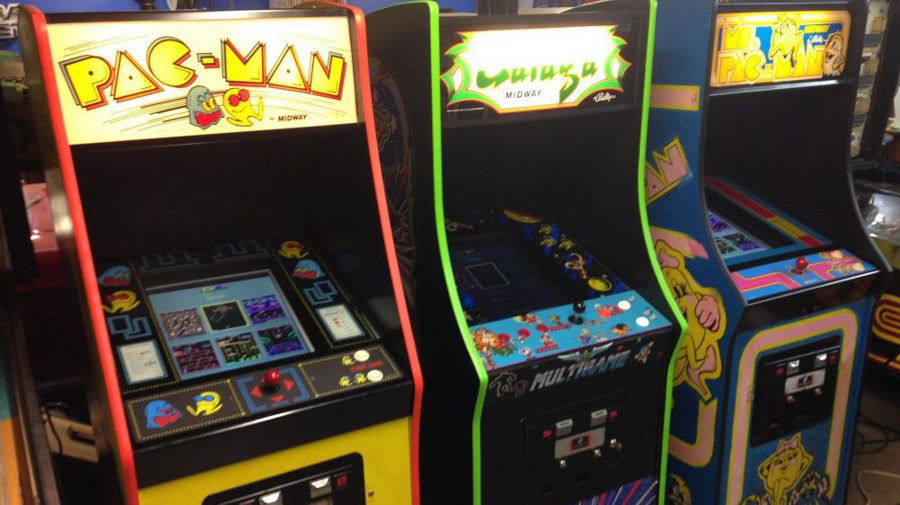
The Beginnings: The Birth of the Genre
The beat 'em up genre first appeared in the early 80s, driven by the popularity of arcades. The first game to establish the basis of the genre was Kung-Fu Master (1984), from Irem. Although simple, it introduced the idea of a character advancing in a linear scenario, fighting off enemies with punches and kicks.
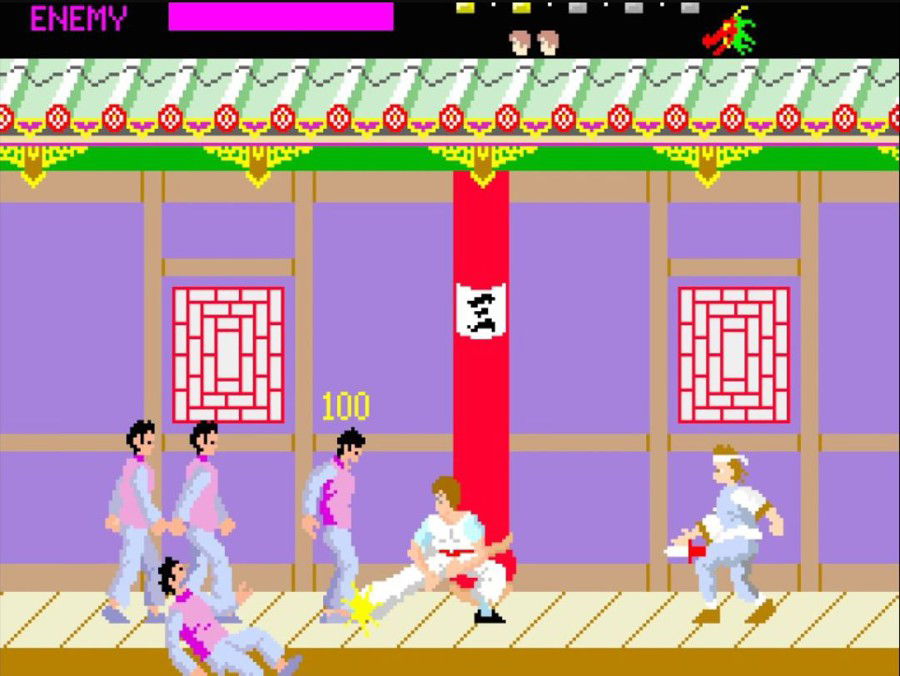
The Father of Beat 'em Up
In 1986, Technōs Japan released Renegade, the game that began to shape the genre and is considered the father of beat 'em up.
The game introduced the mechanics of walking in eight directions on the screen while fighting enemies. It was also one of the first to allow the player to use weapons and perform basic combos.
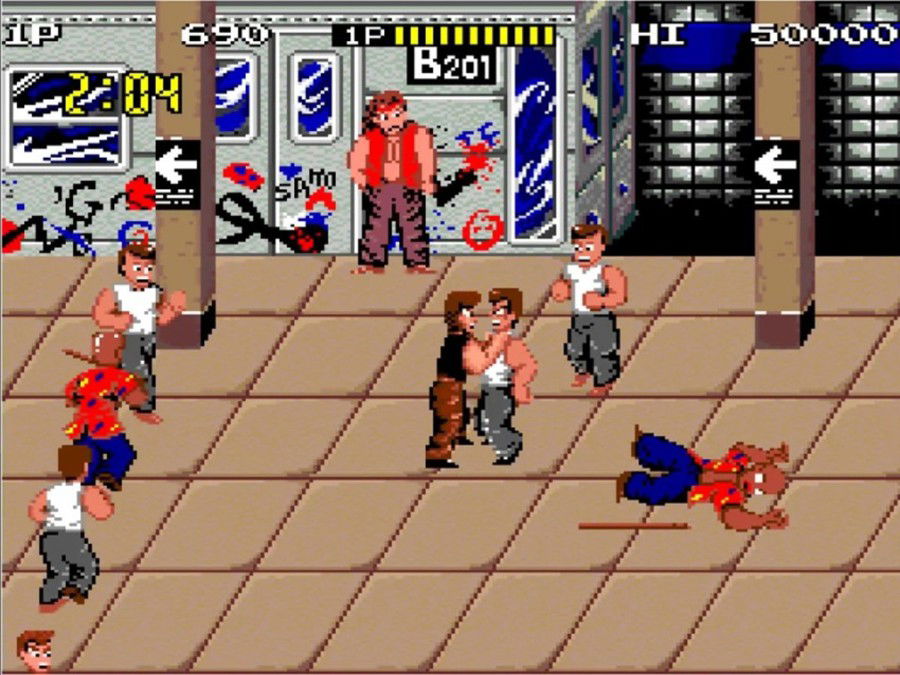
The game was a port of Nekketsu Kōha Kunio-kun released a bit earlier in Japan.
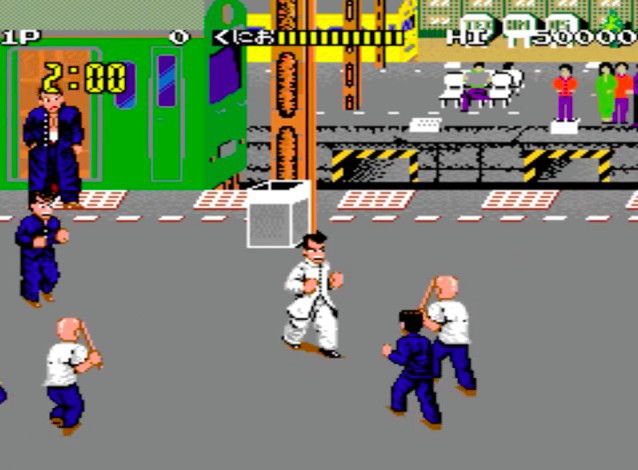
In the original Japanese version, the game revolves around a young high school punk named Kunio-kun (Kunio) who must face off against a series of rival gangs who’ve targeted his classmate Hiroshi.
In the Western version of Renegade, the player controls a street fighter who must face four different gangs to rescue his girlfriend, who is being held captive by a mafia boss. This change in the plot would define the beat 'em up genre.
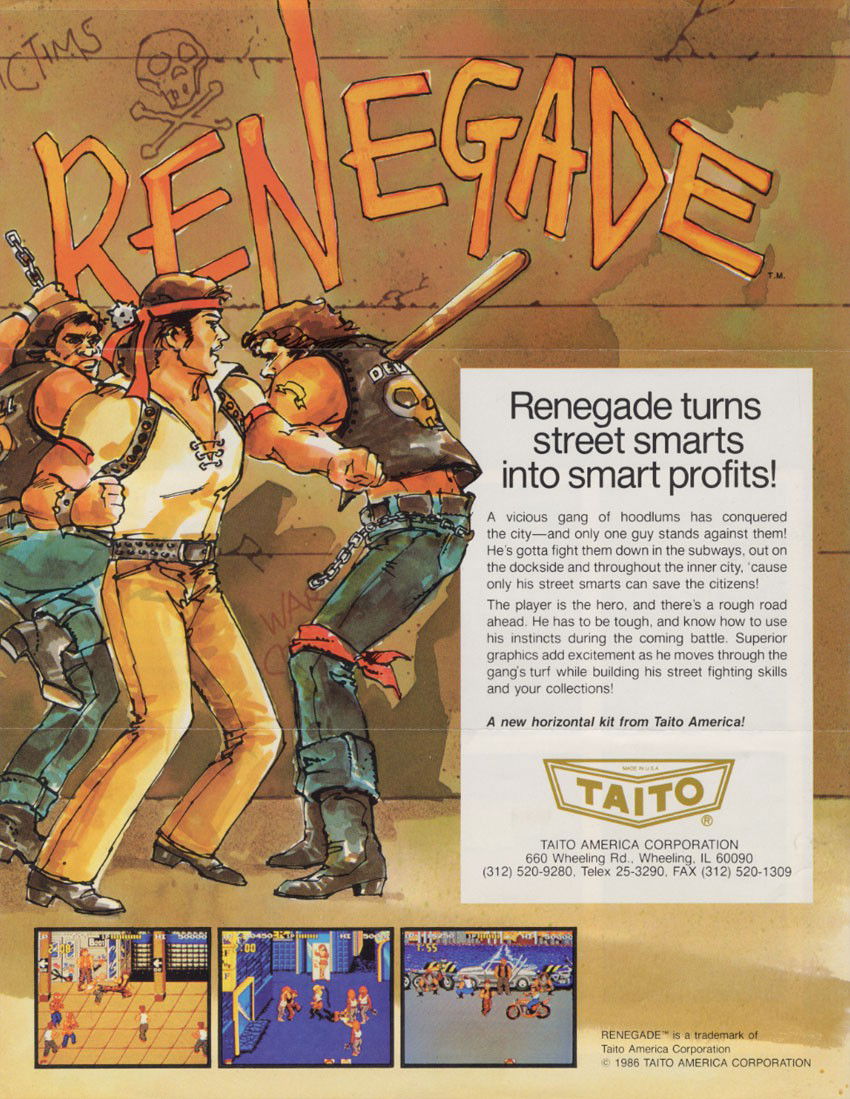
The big milestone came in 1987 with Double Dragon, also from Technōs Japan. This game popularized the genre, introducing two-player co-op gameplay, a more solid story, and various fighting moves. Double Dragon became a phenomenon, inspiring countless other games and setting the standard for the beat 'em ups that would come later.
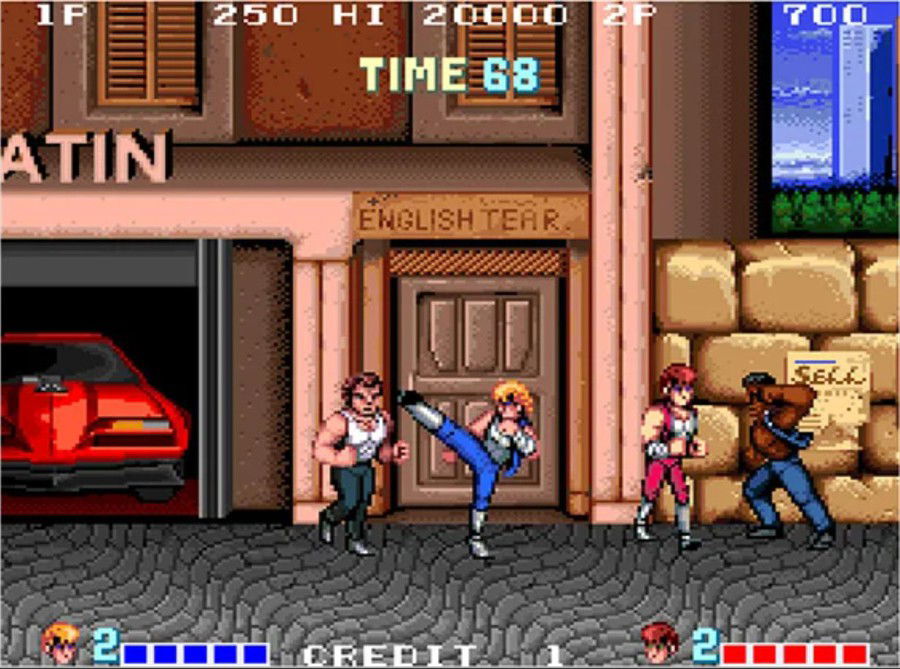
The Golden Age: Arcades and Consoles
The late 80s and mid-90s were known as the golden age of beat 'em ups. Arcades were temples where players gathered to fight bosses and compete for the high scores in the games. The technology of the time allowed for colorful graphics, detailed sprites and pulsating soundtracks.
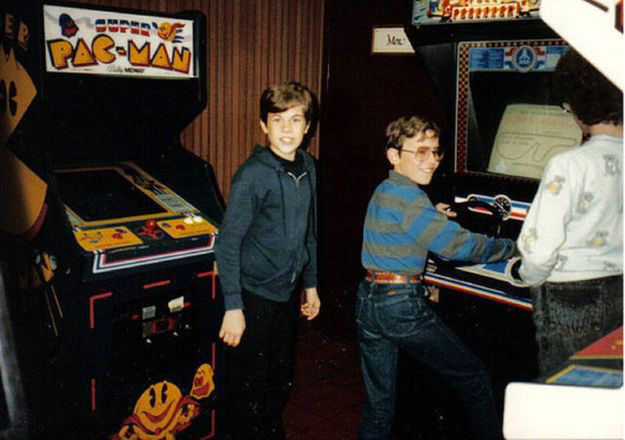
A flood of titles had taken over the arcades and Capcom was one of the main developers of the genre, with franchises such as Final Fight (1989), which took the beat 'em up experience to new heights with extremely detailed graphics for the time, characters with different characteristics and refined gameplay.
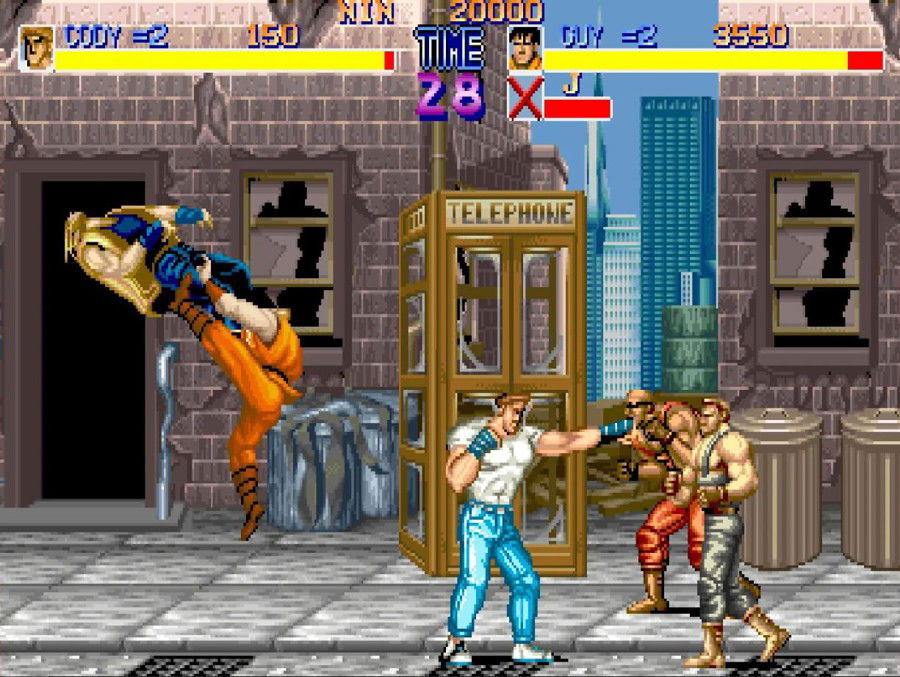
Capcom: Kings of the Genre
Final Fight defined what a beat em up game was:
A Story: The Good Guy saves the fair, helpless maiden from a gang.
Charismatic Characters: Haggar (the fighting mayor), Cody (the vigilante hero) and Guy (the ninja).
Enemy Diversity: From gangs to androids, each with unique attack patterns.
Improvised Weapons: Bottles, knives and even metal pipes could be used against enemies.
The success of Final Fight led Capcom to invest in several other games in the same genre.
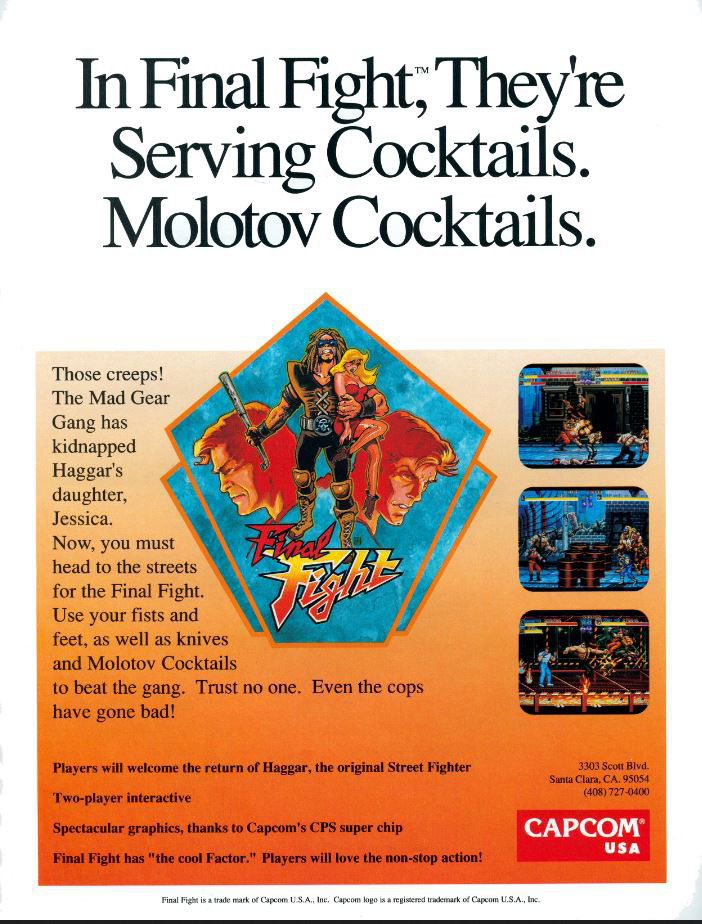
Konami: Licenses and Innovation
Konami bet on licensing popular IPs to win over the public:
Teenage Mutant Ninja Turtles (1989) and Teenage Mutant Ninja Turtles: Turtles in Time (1991) with four simultaneous players, dynamic scenarios (such as a spaceship) and the ability to throw enemies "off the screen".
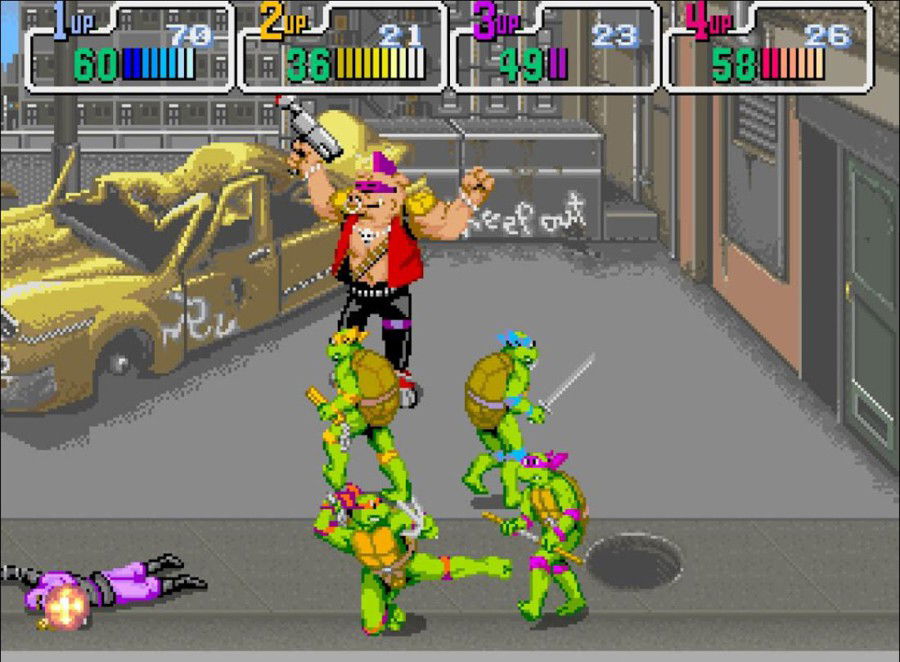
The Simpsons Arcade (1991): Based on the most successful animated series in the United States, the game had a unique sense of humor and memorable bosses, like Mr. Burns.
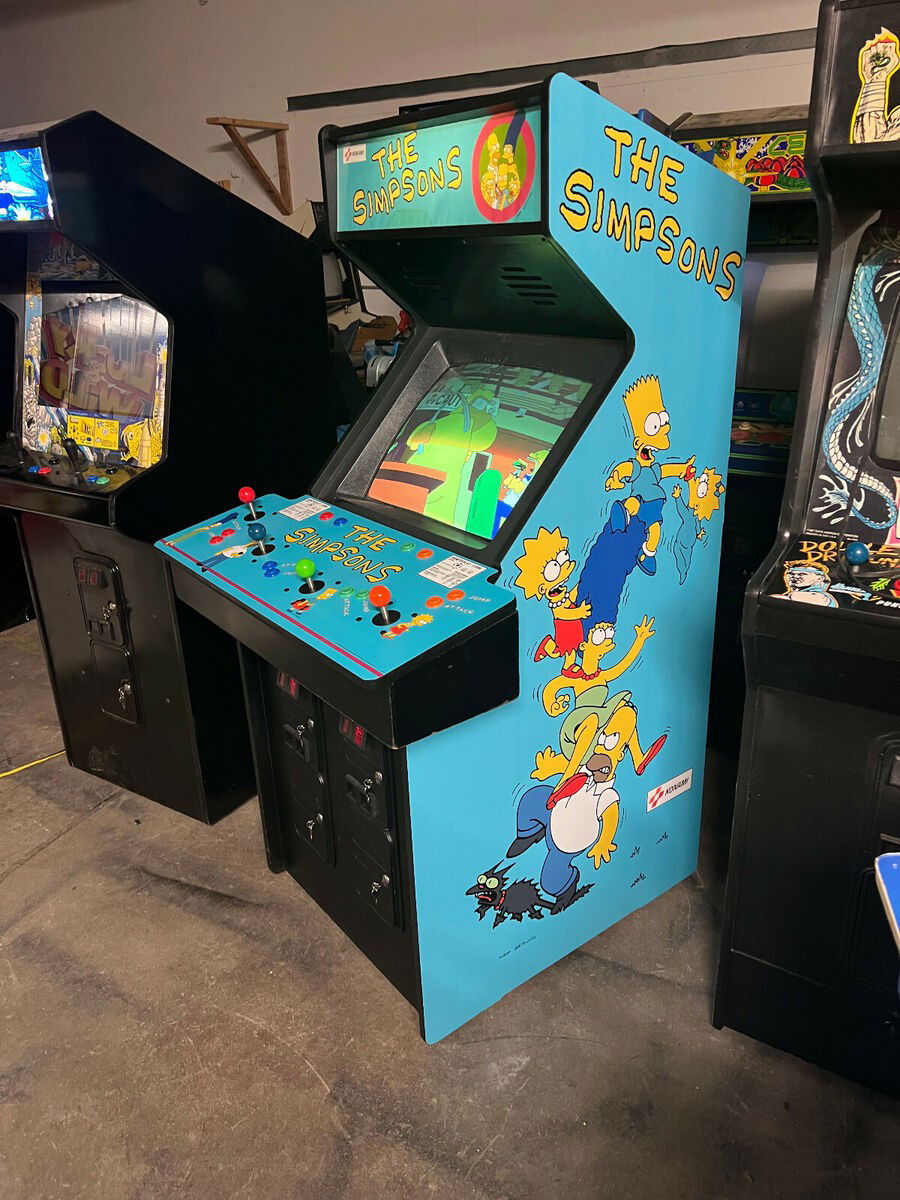
X-Men (1992): With a giant cabinet for six players, the game was a unique experience, full of mutant powers and enemies such as Magneto.
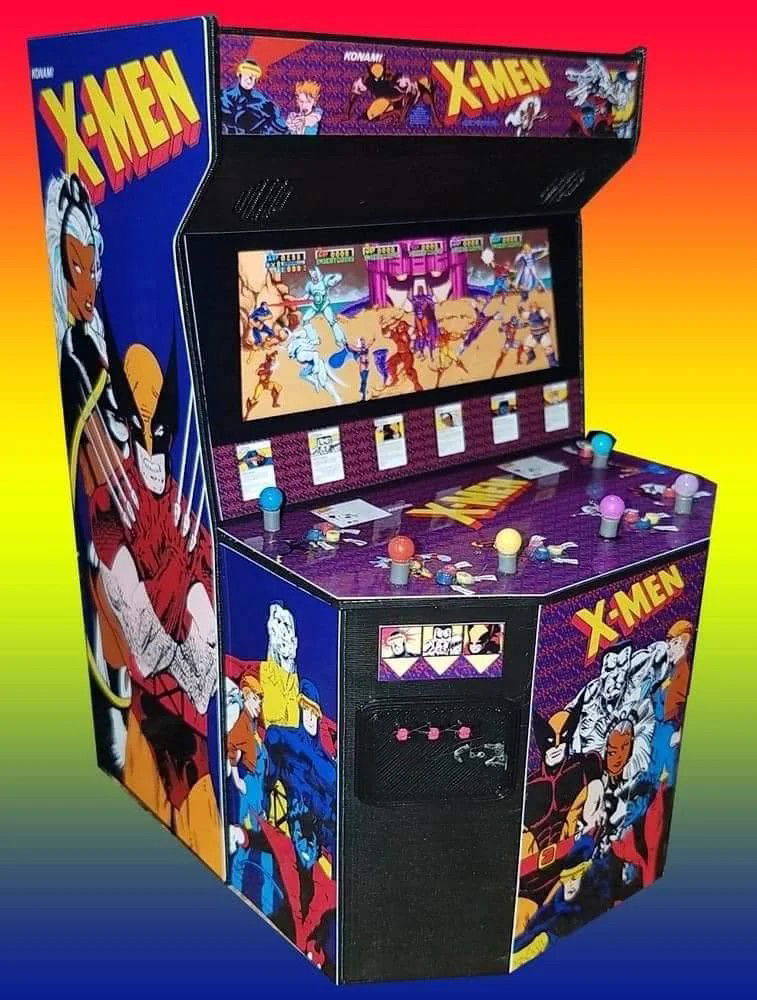
Sega and Technōs: Fierce Competition
Meanwhile, Sega released Golden Axe (1989), mixing medieval fantasy and visceral combat. Knights, dwarves and Amazons fought against hordes of warriors mounted on dragons. Later, this style of fighting with fixed weapons would be called Hack and slash.
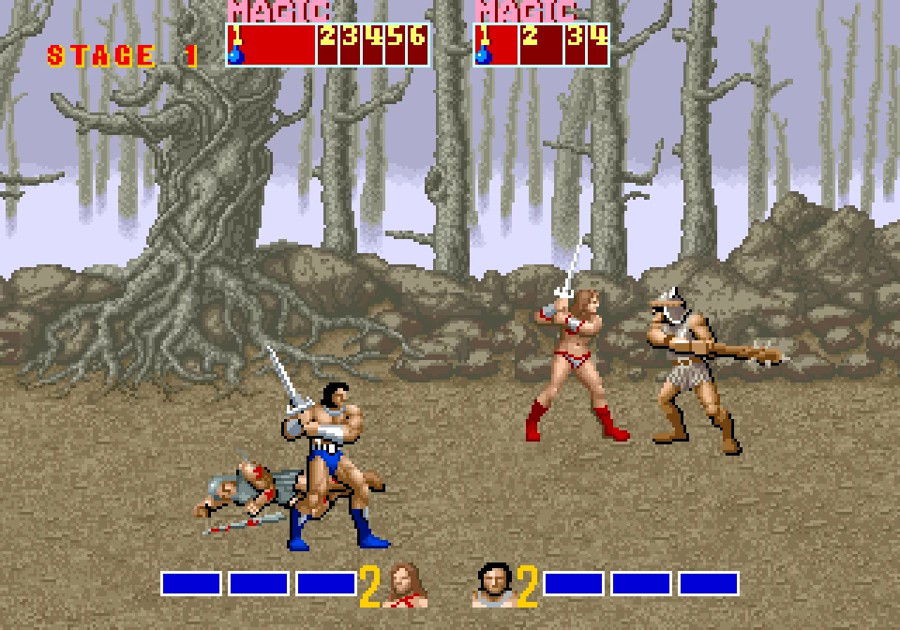
Technōs, in turn, expanded their universe with The Combatribes (1990), where three fighters faced off against gangs in a dystopian New York.
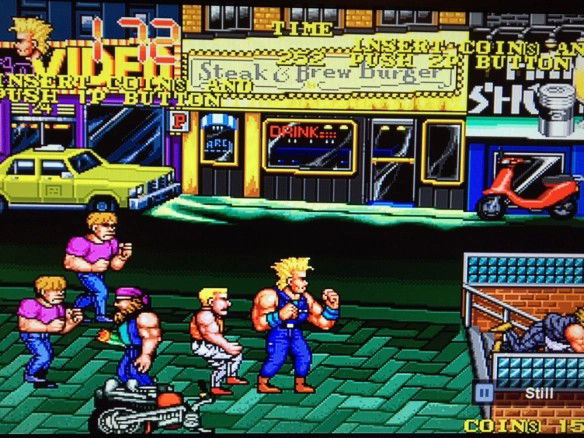
Home Consoles: Adapting the Classics
As arcades gradually declined, consoles brought beat 'em ups to home TVs. Sega and Nintendo engaged in an iconic battle over consoles, each with their own exclusives.
Even though it wasn’t the only console war, the rivalry between Sega and Nintendo for dominance in the gaming market is often the most visible example of one. It established the use of aggressive marketing and advertising tactics by both companies in an attempt to gain control over the market. This confrontation ended around 1995 when a new competitor, Sony, appeared and disrupted Sega and Nintendo's dominant market share.
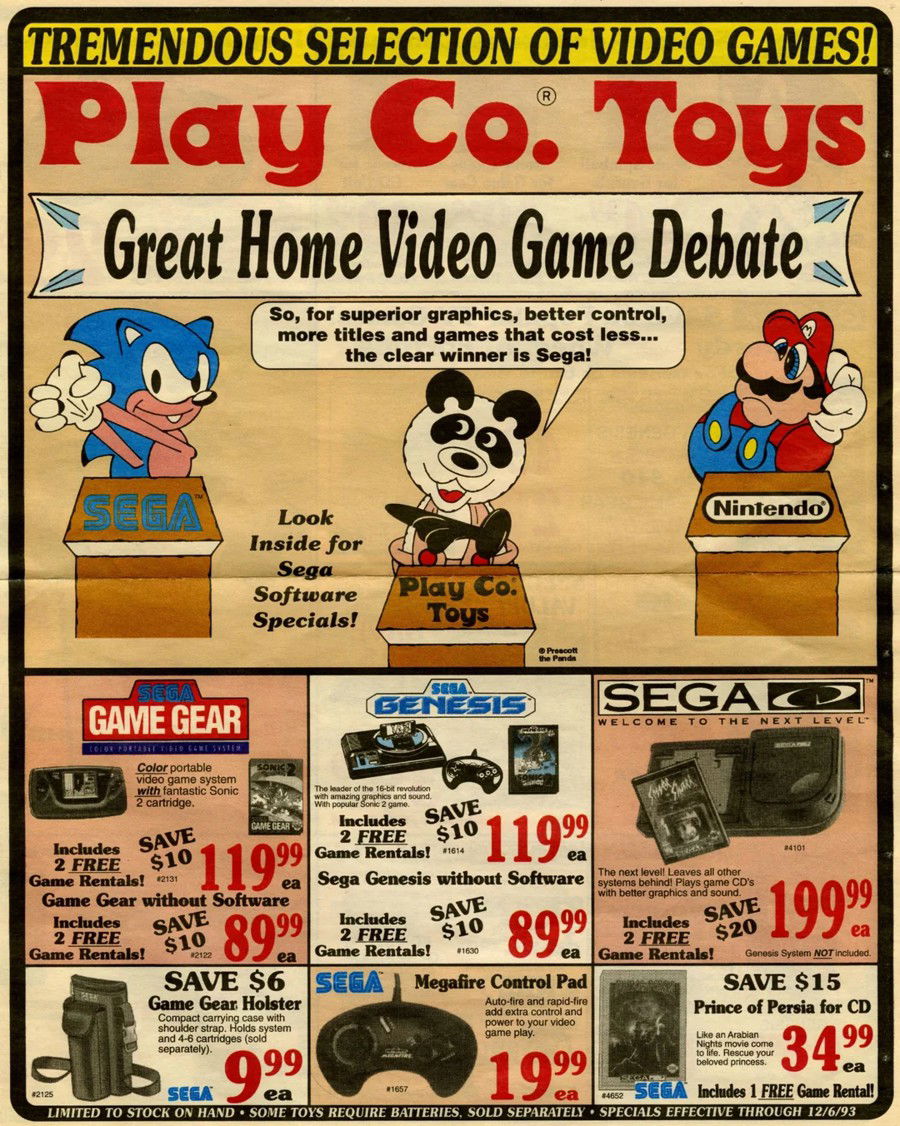
Super Nintendo: Capcom and the Magic of Mode 7
Nintendo brought quality ports such as Final Fight to the SNES in 1990, but without the two-player co-op mode (only added in the Final Fight Guy version).
Another game that stood out was TMNT IV: Turtles in Time (1992), which took advantage of the power of the SNES to include rotation effects (like throwing enemies "into the screen") and detailed sprites.
Batman Returns brought the bat to the screen in a Gotham City infested with enemies.

Sega Mega Drive/Genesis: Streets of Rage and Beyond
Sega started with their wonderful port Golden Axe, which kept the essence of the arcade game, despite the technical limitations.
But it was with Streets of Rage (1991), that the company claimed its place in the spotlight, the game being a direct response to Final Fight. The soundtrack by Yuzo Koshiro (made on the console itself!) took the game to another level.
The sequel Streets of Rage 2 (1992) is considered a masterpiece and the best beat 'em up on consoles, having:
Unlockable special moves.
Unique characters like Skate and the wrestler Max.
Complex bosses such as Mr. X and his clone army.
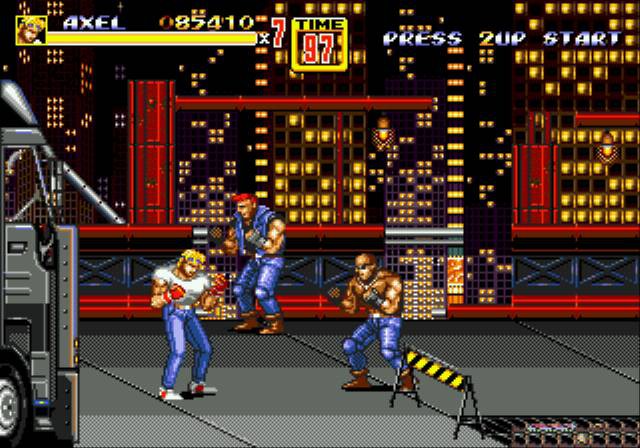
8-Bit NES enters the Fight
Other games that were also a big hit were released on the 8-bit NES.
Some games were exclusive to the console:
Battletoads (1991, NES): Known for its brutal difficulty and varied stages (like hoverbike races).
River City Ransom (1989, NES): A beat 'em up RPG where you could buy items to improve your abilities.
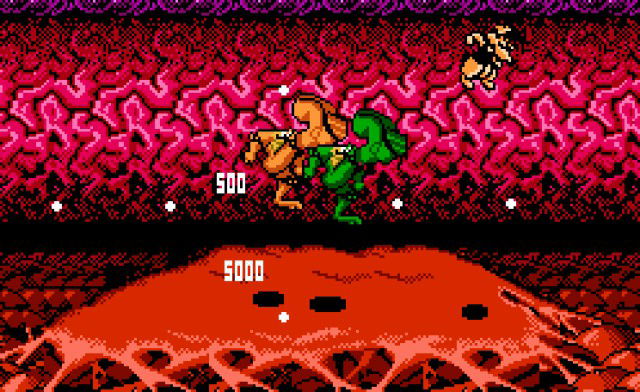
Innovative Games
The golden age wasn't just about repeating formulas. Many games introduced revolutionary mechanics:
Vendetta (1991, Konami): This game introduced more adult themes such as biker gangs and drinking, as well as introducing a system that was in Renegade where enemies could be attacked while they were down on the ground.
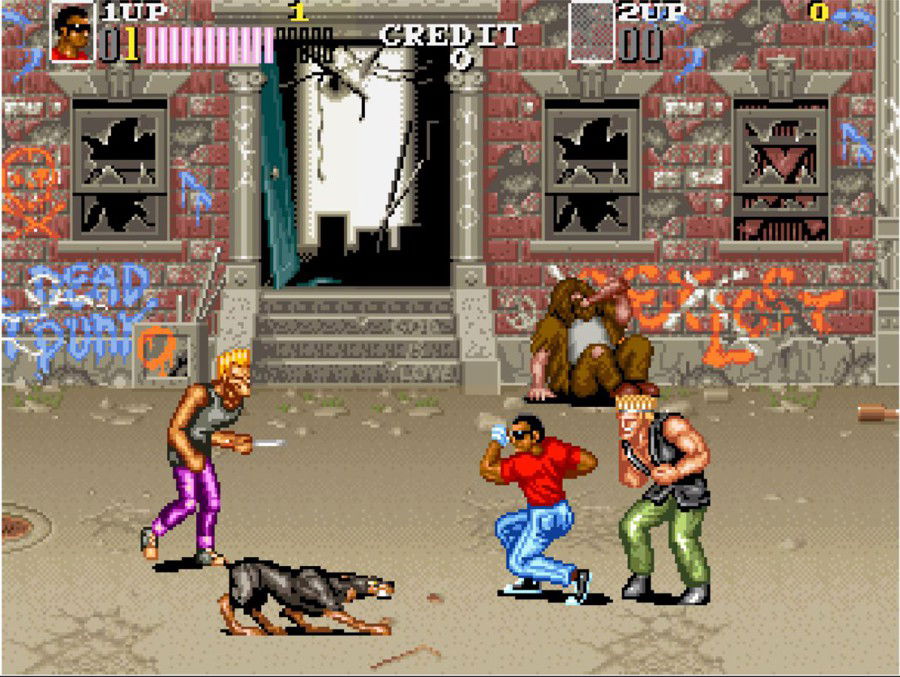
Cadillacs and Dinosaurs (1993, Capcom): Based on a comic book, the game is considered the best beat 'em up in arcades. It improved all the mechanics of the genre, in addition to allowing the use of firearms and fighting dinosaurs.
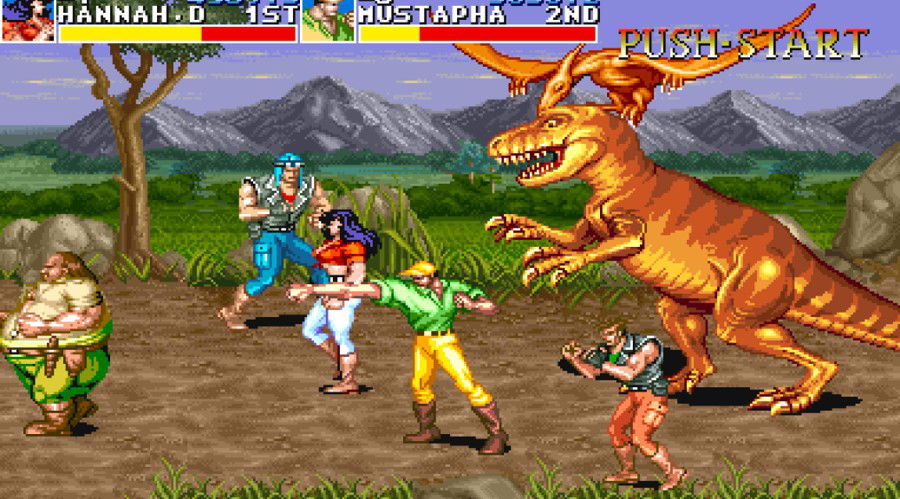
Knights of the Round (1991, Capcom): Another innovative beat 'em up with RPG elements, where characters were improved, and it’s based on King Arthur’s tales.
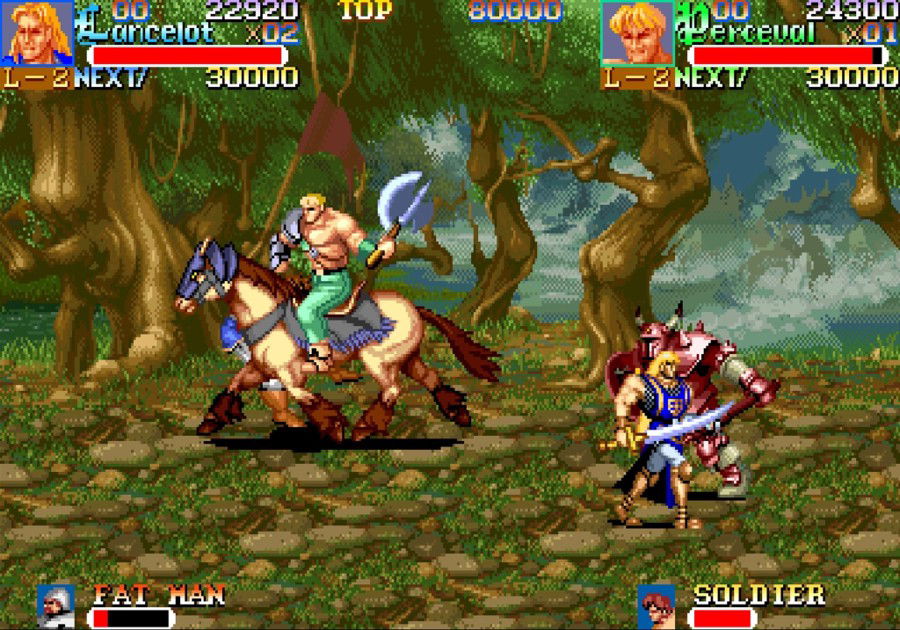
The Cultural Legacy
Beat 'em ups weren't just games, they were cultural phenomenons. Double Dragon inspired a live-action film (1994), while Streets of Rage influenced electronic music artists with its distinctive synth-wave.
In addition, the genre helped popularize:
Local co-op: Playing with a friend was double the fun.
Cross-media licenses: Games based on cartoons, movies and comics dominated the charts.
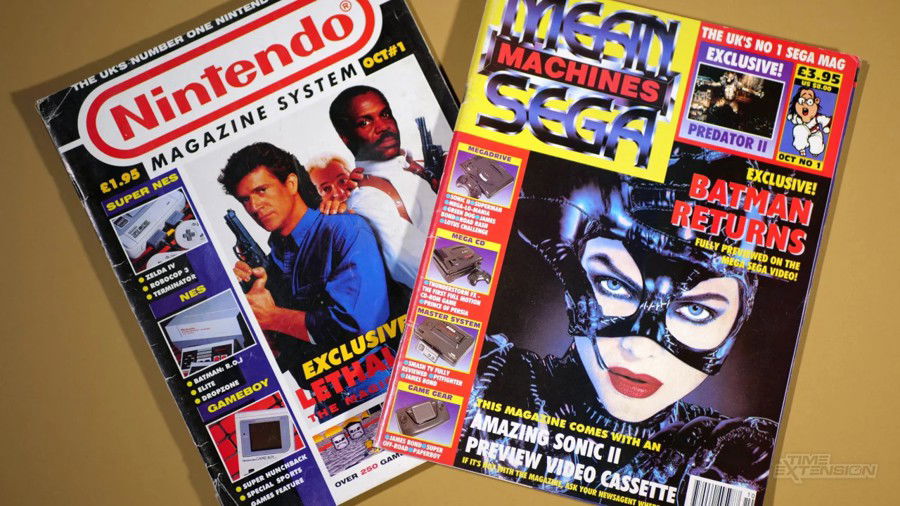
The Decline: The Transition to 3D
The late 90s and early 2000s brought the rise of 3D graphics and a change in players’ interests. The beat 'em up genre began to lose popularity in the late 90s, and 3D fighting games such as Tekken and Street Fighter EX, as well as third-person action titles such as Devil May Cry started to dominate the market.
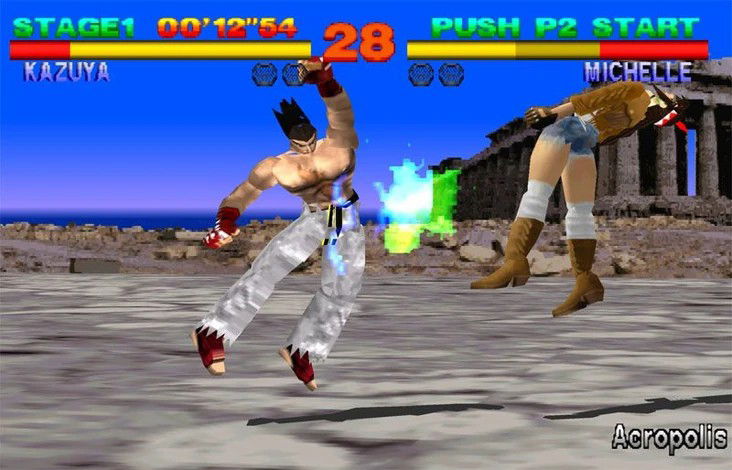
A few developers tried to keep the genre alive with Fighting Force (1997), which was an attempt to bring beat 'em up to the 3D world, but failed to capture the magic of the 2D classics. Other titles, such as Viewtiful Joe (2003), from Capcom, brought a more artistic universe, but still failed to achieve the expected commercial success.
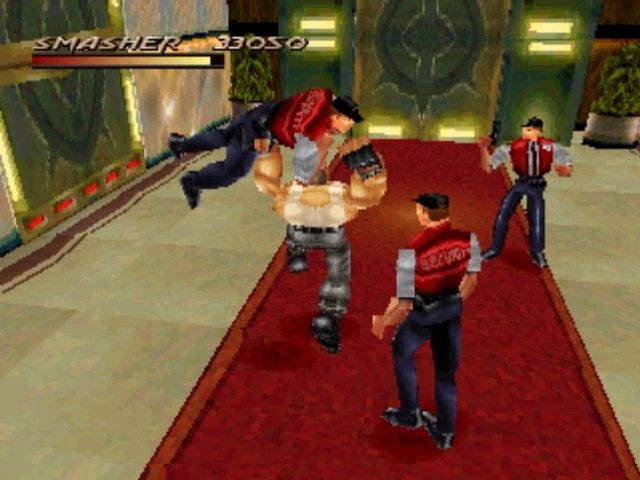
The Renaissance: Nostalgia and Innovation
In recent decades, the beat 'em up genre has experienced a renaissance, driven by nostalgia and indie developers looking to revive the classics. Games like Scott Pilgrim vs. The World: The Game (2010) and Shank (2010) brought a new perspective to the genre, mixing modern graphics and classic gameplay.
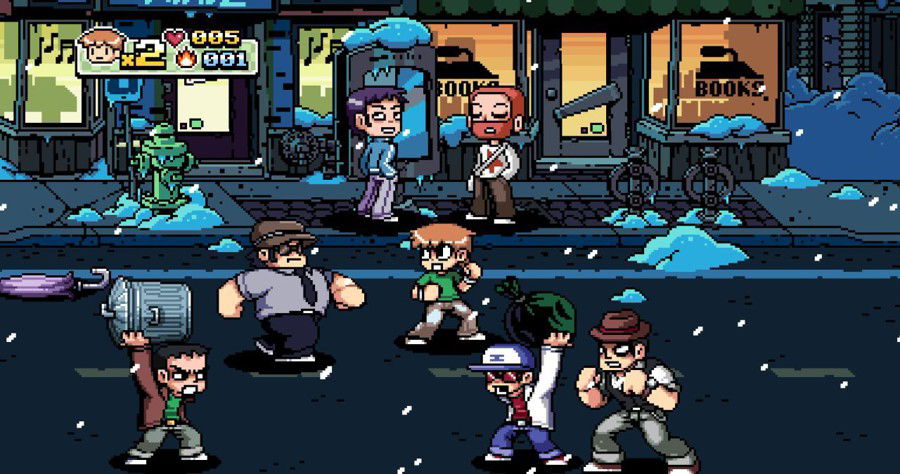
WayForward's River City Girls (2019) expanded the Renegade universe with a new story, charismatic characters, and current gameplay. Games such as Fight'N Rage (2017) and The Takeover (2019) also kept the genre alive, paying homage to the classics while innovating in design and mechanics.
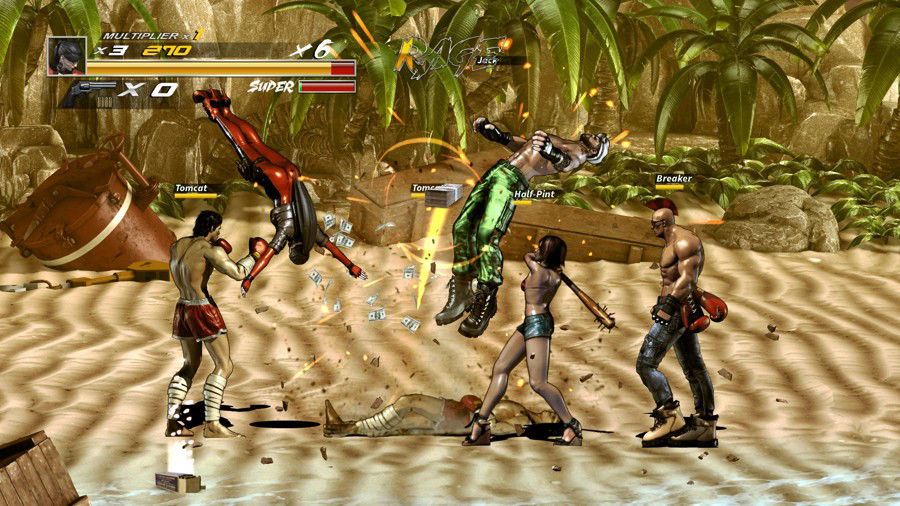
But it was with Streets of Rage 4 (2020), a direct sequel to the classic Sega series, that the genre was fully reborn. Developed by Lizardcube and Guard Crush Games, the game managed to keep the essence of the original beat 'em ups while delivering current and stunning graphics, in addition to fully updated game mechanics. The game was acclaimed by critics and fans alike, proving that there’s still a place for the genre in today's market.
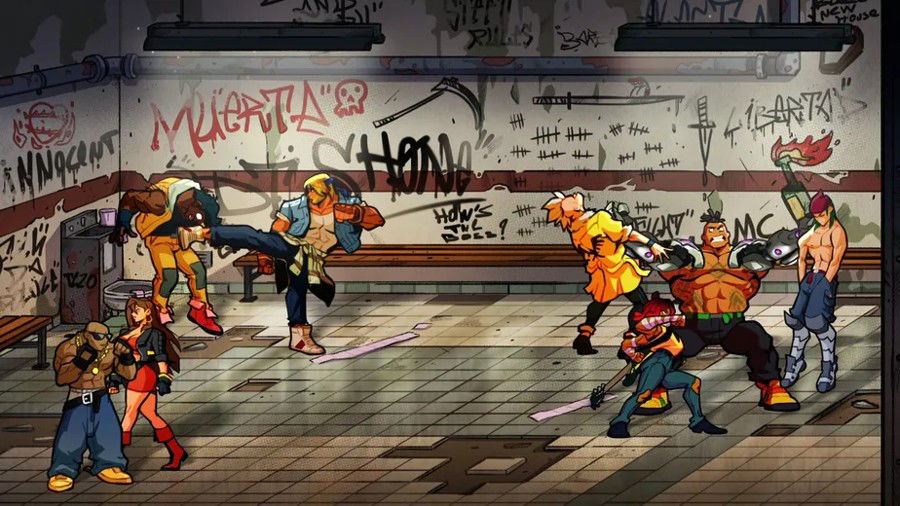
From that point on, games like Teenage Mutant Ninja Turtles: Shredder's Revenge, Double Dragon Gaiden: Rise of the Dragons, The Karate Kid: Street Rumble and other titles that are still being released keep the flame of the beat 'em ups alive.
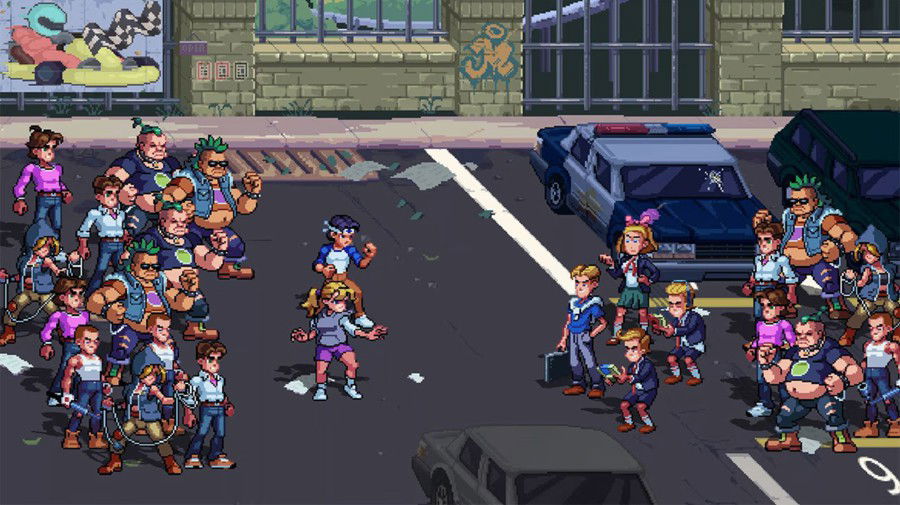
Conclusion: The Legacy of Beat 'em Ups
Beat 'em up games may no longer be the kings of the arcades, but their legacy lives on. They represent an era where simplicity and fun were shared, where the objective was clear: advance, defeat enemies and save the damsel. With the resurgence of interest in the genre, as a huge fan of the style, it’s exciting to see how developers are keeping the beat ‘em up flame alive while also exploring new possibilities.
Be it by revisiting the classics or trying out new games in the genre, one thing is for sure: beat ‘em ups will continue to be a beloved part of video game culture, reminding us that sometimes all we need is a good punch, a good kick, and a friend by our side.









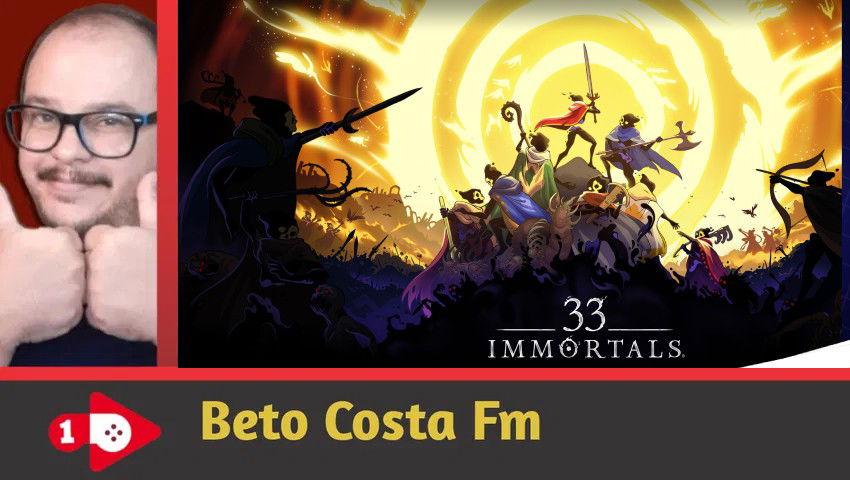
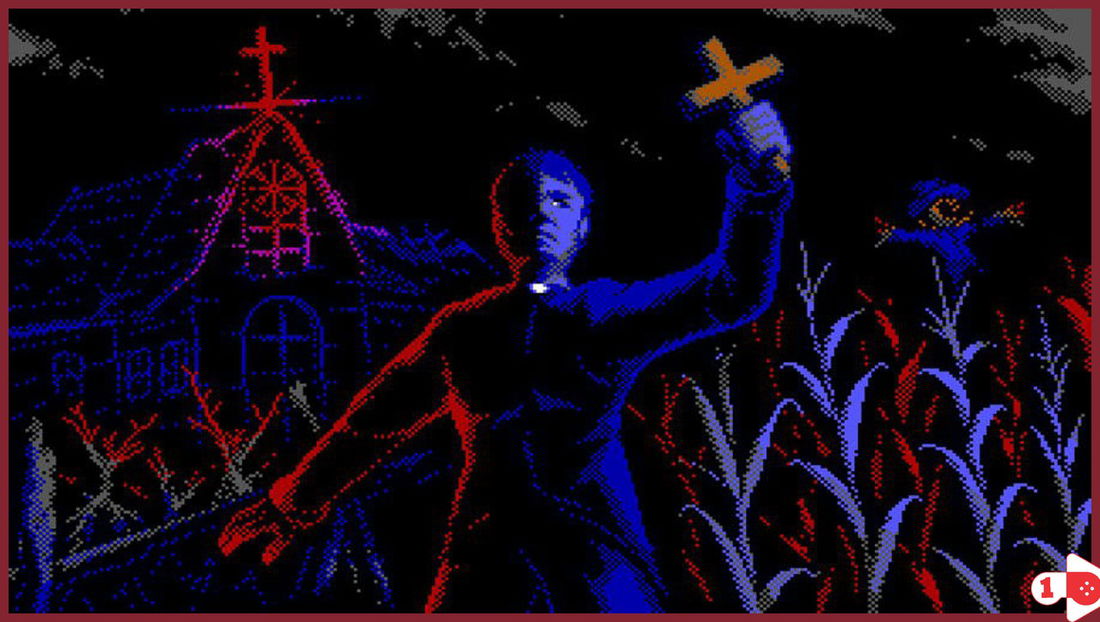



— 코멘트 0
, 반응 1
첫 댓글을 남겨보세요